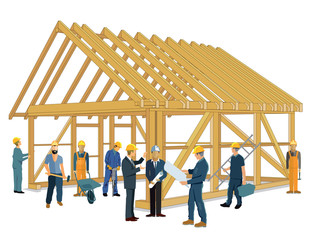 OPINION: Numerous articles have been written on solutions to the housing “crisis” sufficient to fill a large waste container, but I remain skeptical about whether there is a real solution in sight. This is not the first time I have opined on the subject, and it is unlikely to be the last.
OPINION: Numerous articles have been written on solutions to the housing “crisis” sufficient to fill a large waste container, but I remain skeptical about whether there is a real solution in sight. This is not the first time I have opined on the subject, and it is unlikely to be the last.
The aspect that most bothers me is that it is still seen as predominantly a supply problem, but in reality, the shape and size of market demand are just as important as supply.
On the supply side, there are some indicators of good progress. It is now recognized I think that one key to the supply of affordable housing is prefabrication and there also needs to be a shift to smaller housing units. The interesting shift here is that thinking has progressed beyond apartments – which are the obvious solution to small size – to novel approaches to stand-alone units.
Prefabrication dramatically lowers the cost of a house, but of course, there needs to be enough demand to justify the investment in facilities which is where the demand side becomes very important. If a solid and large market is not assured then the risk becomes significant.
In the case of size, I think it is now well recognised that the typical family of the 21st century is often a fraction of the size of the large families that prevailed when State housing first started up. So, the average size of a new house should reflect that. That’s one of the reasons cited by National for selling off State houses – that much of the current stock is too large for current requirements. But in reality, I think there was an ideological commitment to selling down the stock which drove the programme. That approach has now been reversed by the present Government and that will eventually see the stock of State houses rise again.
But all of this is very supply driven, i.e. it is assumed that if prefabricated, smaller houses are built in sufficient numbers, first home owners, in particular, will buy them. Problem solved? Well hardly because even if you look only at the supply side it is widely recognised that we are most unlikely to meet the targets that have been suggested.
But equally importantly this does not sufficiently recognise the demand side. There is a significant risk that even if an advantage is taken of the lower costs of prefabrication and housing units are smaller to suit today’s start-up families – the cost will still be too high for many prospective first home buyers and the problem will remain. Indeed, the problem may be exacerbated by the existence of new housing stock which can only be sold within the existing market because it is too expensive.
I think a key issue is that we are not looking at the problem from the right perspective. The key question is what first time homeowners can afford to pay and for what essential facilities, and how do we meet that demand. We need to establish those benchmarks and then re-think supply from that perspective.
If that is done then I think it becomes clear that the key issue is that of design to a meet an affordable cost target. This is a far more difficult proposition that just applying cost-saving techniques such as prefabrication. In order to meet the targets, it may be necessary to radically rethink the way that space within a house is designed and utilised. We may have to look at unusual or non-standard materials and rethink the way the package is assembled on site. There are also likely to be multiple solutions rather than “one size fits all”.
We also have to better recognize that the demand side is complex and consists of a number of different components, all with different characteristics. Sorting this out is a non-trivial task which requires a conversation between designers and buyers – on the supply side to find out exactly what the design parameters need to be and how they vary between different types of first home buyer, and on the demand side to get some reality into what first home buyers are likely to be able to get, compared with what they would ideally like.
Without this change in emphasis, I think that housing will continue to be a nagging sore and a political landmine for all those concerned – the industry (suppliers), politicians and those who would like to be actual first home buyers.
By Bas Walker
This is another of Bas Walker’s posts on GrownUps. Please look out for his articles, containing his Beachside Ponderings.










Join the Discussion
Type out your comment here:
You must be logged in to post a comment.